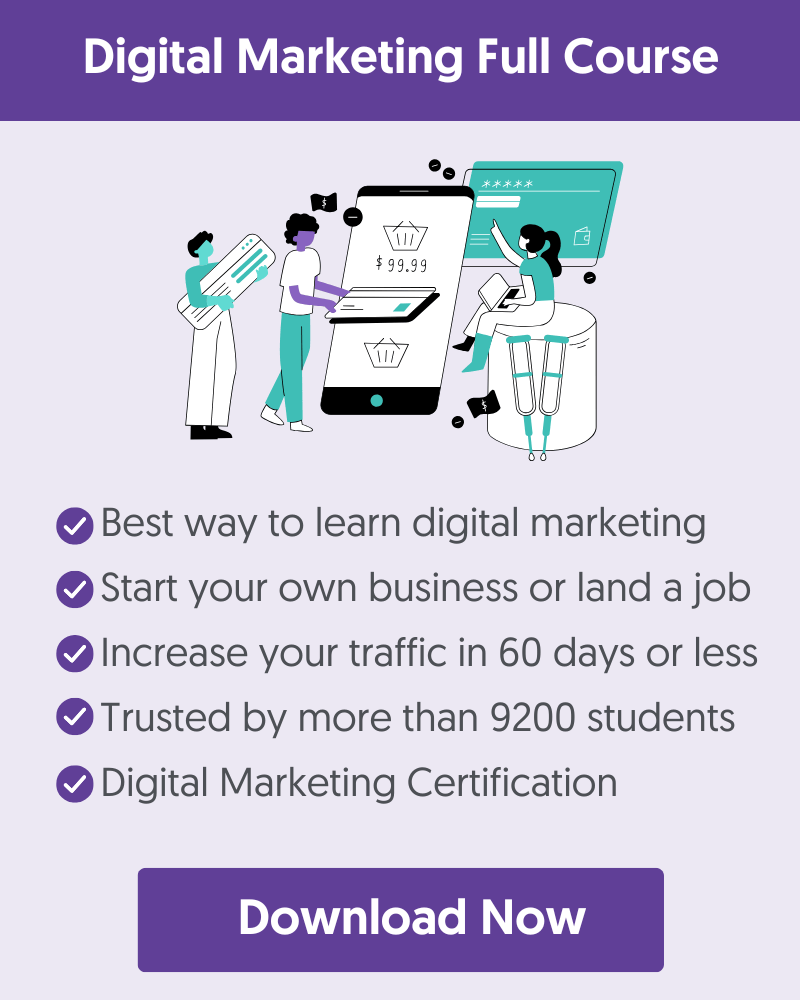To get results from social media marketing, it's crucial to have a well-defined social media marketing strategy. Every social media campaign you execute should be part of your overall strategy for maximum exposure.
The word ‘strategy’ may sound a bit sophisticated, but in reality, there is some sort of strategy involved in all our online activities, even if we don’t realize it.
A formal social media marketing strategy will put everything in the correct order to get better results.
This strategic approach is not uncommon in digital marketing. It is actually a good practice to have an overall digital marketing strategy that is over and above social media.
In this post, you'll learn how to create a successful social media marketing strategy step-by-step.
What Is a Social Media Marketing Strategy?
A social media marketing strategy is a clearly defined plan with milestones and targets on using social media networks to promote your personal brand or business.
A strategy will tell you which social networks to use, how to use them, what to expect as a return from each network, and how to measure progress.
Why do you need a social media strategy?
Back in the days when the social media buzz started, it was easy to get on the social media wagon.
All you had to do was to create a Facebook page and a Twitter account and start sharing your personal or business posts.
Today things are different. Not only because there are more social networks that matter (think TikTok), but because of the competition, it takes a lot more effort to get attention.
Facebook has repetitively changed its algorithm to reduce the organic exposure of a post (in other words, fewer people that follow you see your updates).
According to studies, only 4 out of 100 people that follow you will see your updates in their feed. For those who like numbers, this was 60% a few years ago.

Twitter is going in the same direction, and Instagram has a 32% year-over-year decrease in organic reach, which makes it more difficult to get good results.
That’s why it is time to stop for a moment and think about your social media strategy as a whole.
Identify your social media goals and the best ways to achieve them without breaking the bank and without losing more time posting, tweeting, and pining than needed.
How to Create a Social Media Marketing Strategy?
- Identify your social media goals
- Associate social media goals with business goals
- Identify your target audience
- Choose your social media networks
- Take a sneak peek at your main competitors
- You need content, a lot of content
- And yet, it’s not only about content
- You do have to create a plan
1. Identify your social media goals
The first step in creating a social media marketing strategy involves identifying your goals.
A successful social media marketing campaign offers several benefits to your business, which are, in essence, your social media goals.
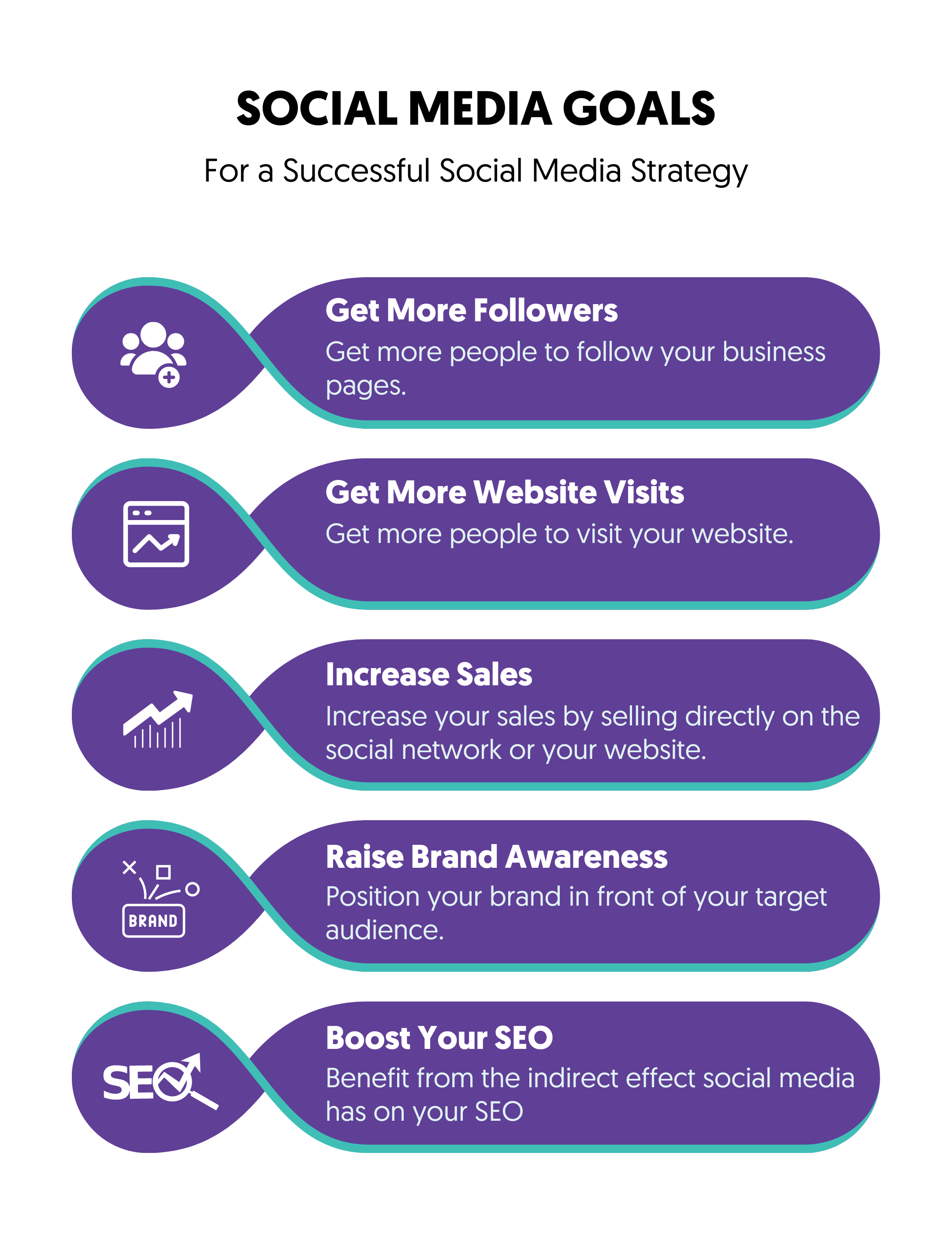
The most common goals are:
To get more followers to your business pages - All major networks (Facebook, Linkedin, Instagram) allow you to create social media pages for your business, and naturally, one of your goals would be to get more people following your pages.
To get more visits to your website - Most businesses use social networks as a way to get more visitors to their websites.
In theory, there are millions of users on social media, and you want to get a portion of them (in many cases, a very tiny one) to visit your website.
To increase sales - Social networks can be used as a sales channel. You can increase your sales by either selling directly on the social network or through your website.
To raise brand awareness - This is perhaps one of the most efficient ways to utilize social networks.
You can raise brand awareness by positioning your brand in front of your target audience through organic ways or advertising.
To boost your SEO - While there are no direct SEO benefits from social media, there are a lot of indirect benefits that can positively impact SEO.
As a simple example, pages shared through social media networks are more visible to Google and other search engines, which has a positive (indirect) effect on your overall SEO.
2. Associate social media goals with business goals
The second step is to associate social media goals with business goals.
For example, you may set a social media goal to get more visitors from Facebook and a business goal to convert those visitors into newsletter subscribers.
If you want to take it a step further, you can calculate how much it costs you to get a new newsletter subscriber from Facebook and determine if this is profitable for your business or not.
Of course, you can use any other criteria like making a sale or acquiring a lead, not just newsletter subscriptions.
3. Identify your target audience
There are billions of users on social media networks, but for business purposes, you only need to target specific audiences.
Depending on your type of business, you may want people that live in a particular area, are of a certain age, with specific demographic characteristics.
To do that, you use targeting, a feature that will narrow down your audience so that you don’t waste your budget on people that will never be interested in your offerings.
For example, if you are promoting a kindergarten school in Ontario, you want only the people that live close to your area to see your posts or ads and not everybody.

4. Choose your social media networks
How can you better reach your target audience? Is it through Facebook, Twitter, LinkedIn, or any other social network? Should you work on all networks simultaneously, or is it better to concentrate on only a few?
To answer the last question first, it depends on time and budget. Social media management is a time-consuming process.
Trying to work on all networks at once will take a lot of your time (if you plan to do this yourself) or budget (if you plan to outsource this to a digital marketing agency).
A better approach is to start with the social network that is more likely to work for your business and then move on to the rest if time and budget permit.
Instead of trying to do a bit of everything, it’s better to put more effort into the network that can produce better results.
For example, if your target market is males aged 25-34, the most appropriate social networks, based on studies, are Facebook and Instagram.
Spend a few minutes reviewing the tables below to better understand how males and females use social media networks.
The table below shows the favorite social media platforms amongst male internet users.
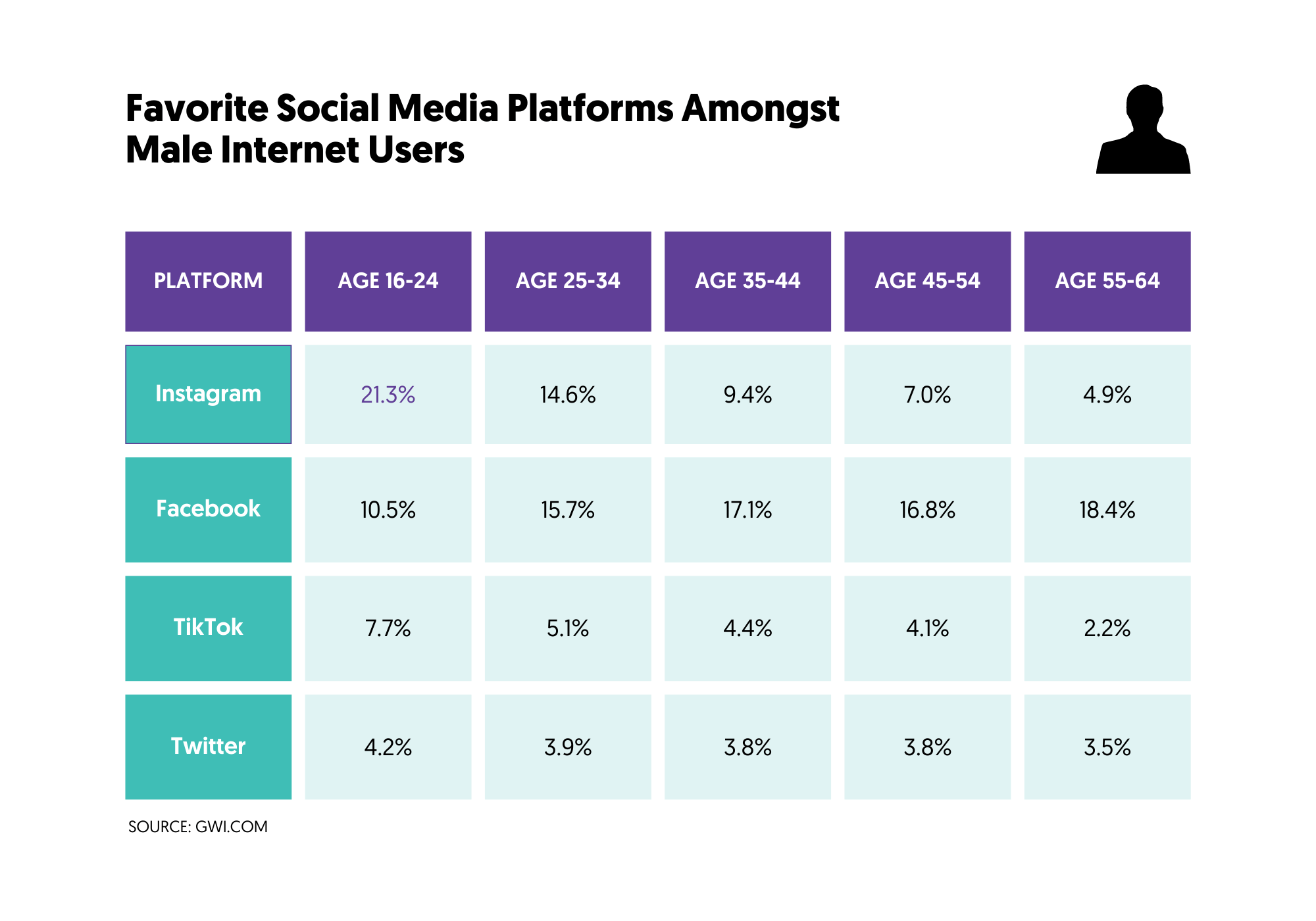
The table below shows the favorite social media platforms amongst female internet users.
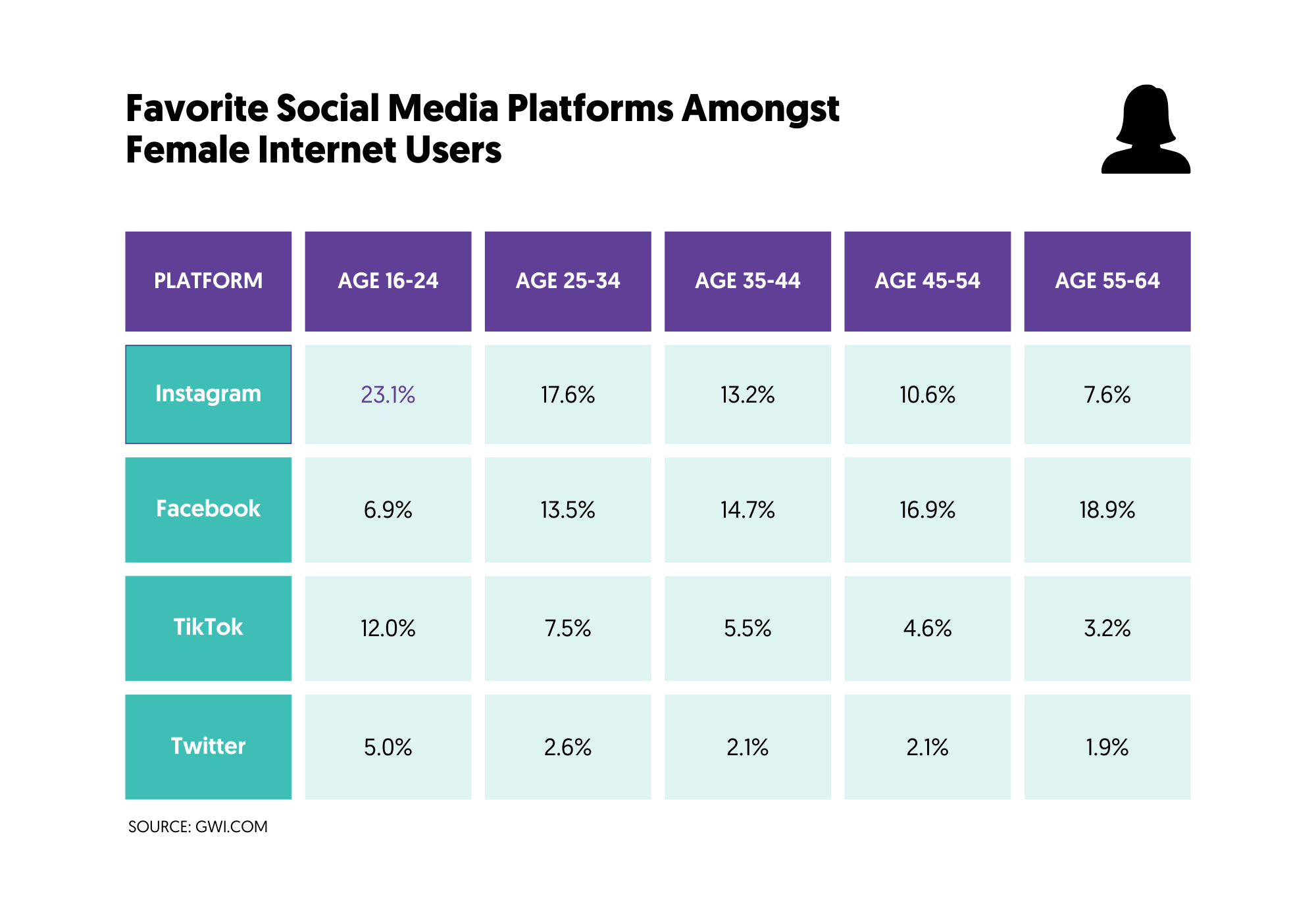
5. Take a sneak peek at your main competitors
While you are working on defining all the bits and pieces of your social media strategy, take a break and see what your competitors are doing.
Visit their Facebook page, Twitter account, etc., and notice:
- How often do they post new content
- What kind of content do they post
- How many followers do they have (and if that number grows over time)
- Generally, try to understand how they use social media.
You can also use the Facebook Ads Library to see what kind of Facebook Ads they run and for how long.
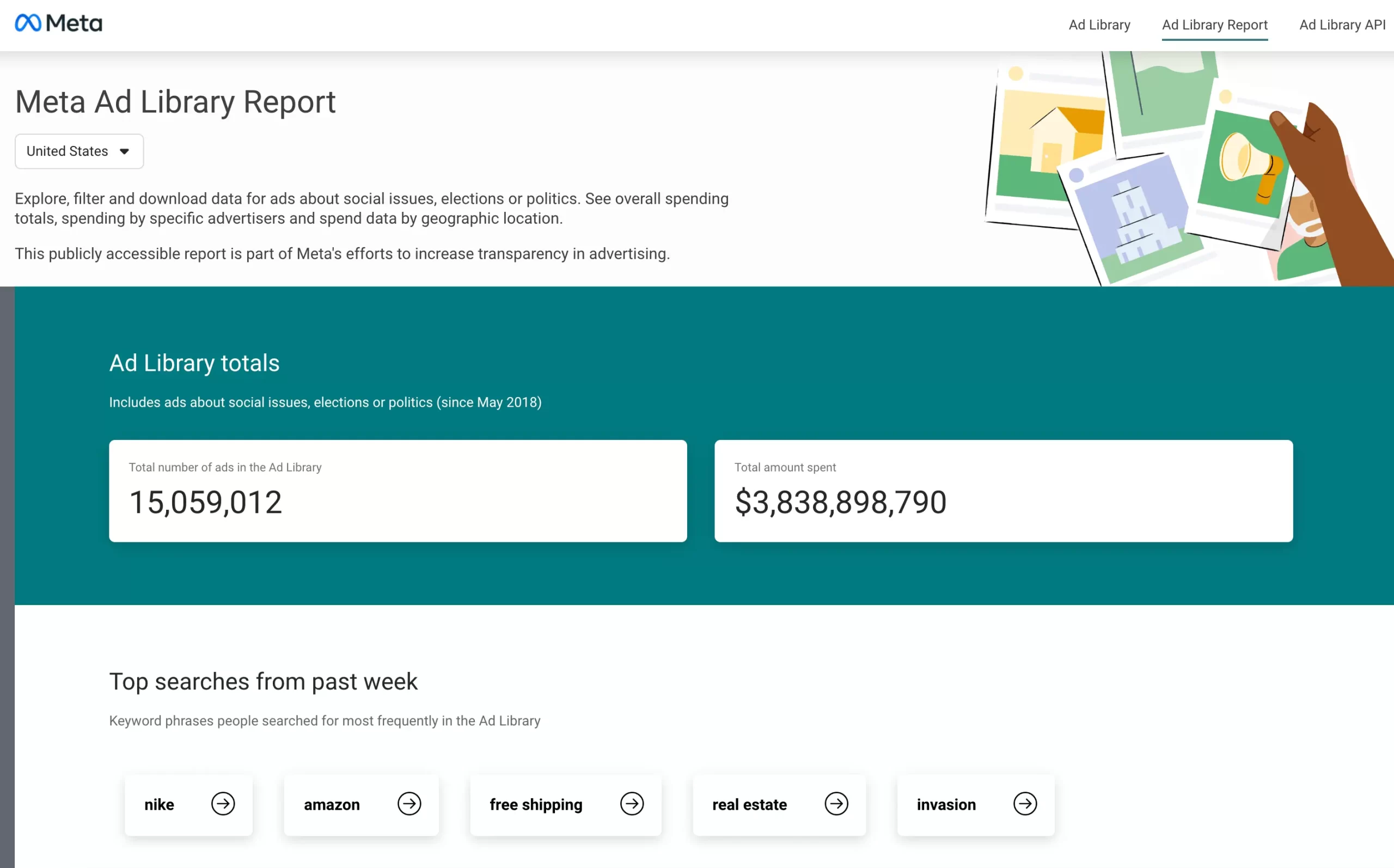
Maybe you get an idea or two you can use in your campaigns and discover something about your competitors you didn’t know before.
6. You need content, a lot of content
Users on social media networks are looking for one thing: interesting content.
Users want to see interesting content in their timelines, whether this is an image, text, or video.
This means that you should forget about over-promotional posts, but rather you need to think about what kind of content your target audience would like to engage with without getting bored.
For example, if you are selling sports shoes, you shouldn’t always post about how good your shoes are, but you should try to make your posts more interesting.
How about posting running tips, how shoes can affect your sports performance, or tips on how to run longer?

These posts will make a user follow your page and build trust in your brand, which has many more benefits than making a single sale.
7. And yet, it’s not only about content
Yes, you need a lot of good content, but content alone will not get you followers or sales.
As I said in the beginning organic reach is getting lower and lower (especially with Facebook), so you need more than just good content to get exposure and interaction.
To bypass this situation, you need to take advantage of the advertising platforms of each network and run paid ads to reach your target audience.
For the majority of businesses, Facebook Ads is the best starting point.
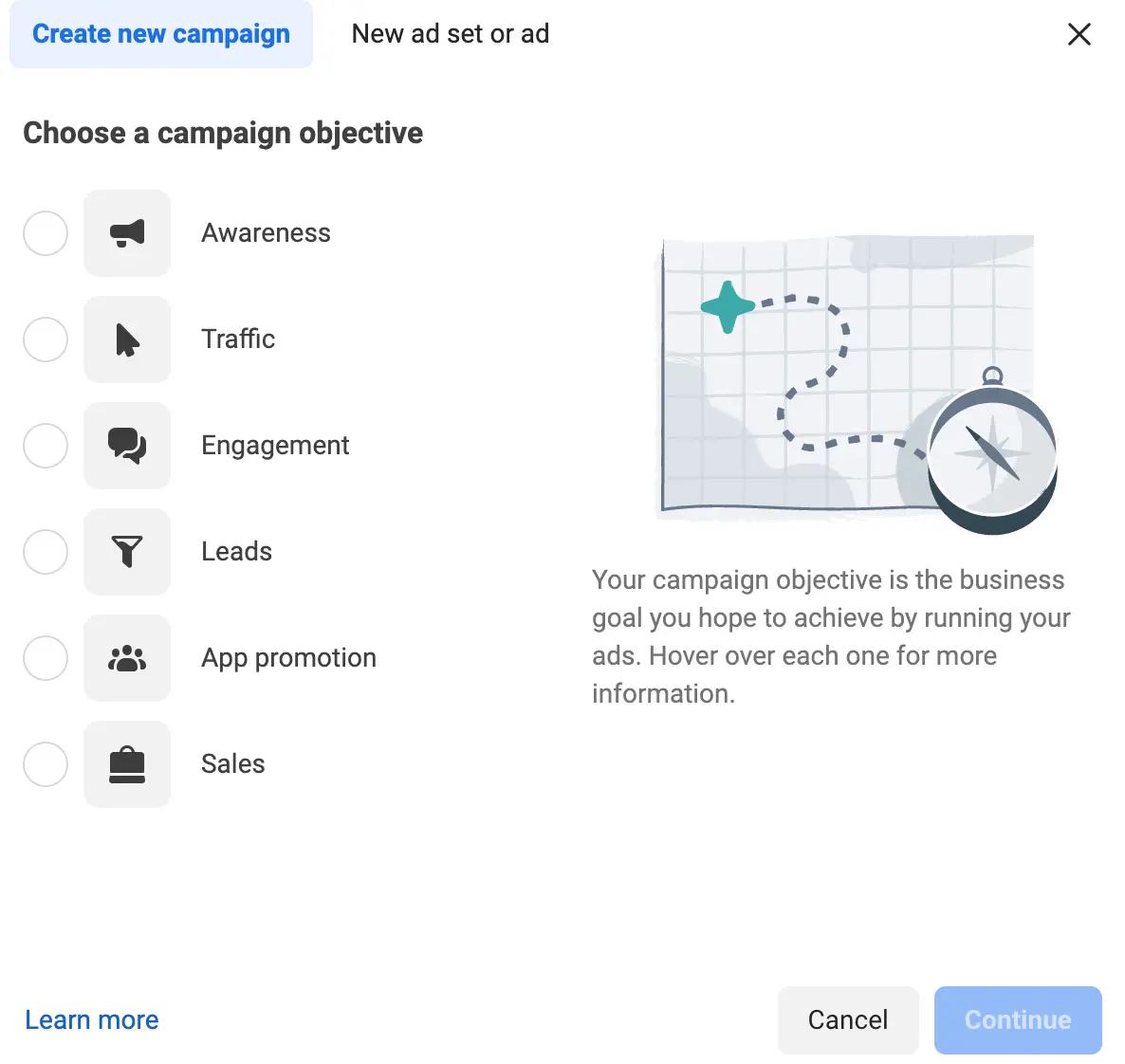
Facebook Ads is a powerful tool that can help you get more exposure and reach your target audience on Facebook and Instagram.
You can use Facebook ads to target an audience based on the demographic characteristics, how they use Facebook or how they have engaged with your website.
Here are a couple of use cases:
Facebook Boost Posts: This feature allows you to promote a specific post to a larger audience beyond your current followers. Boosting a post can help you get more likes, comments, and shares, increasing your overall visibility on the platform.
Running Ad Campaigns: Another effective way to use Facebook Ads is by running targeted ad campaigns. You can create campaigns that are designed explicitly to promote a specific product or service.
Lookalike Audiences: You can run campaigns targeting lookalike audiences. Lookalike Audiences are based on people with similar characteristics to your existing customers.
Our Facebook Ads course covers everything from setting up your first ad campaign to advanced targeting strategies and optimization techniques. With our expert guidance and hands-on training, you can master Facebook Ads and take your social media marketing to the next level.
8. You do have to create a plan
A social media strategy is not complete without a plan. A well-thought plan should include the above and specific details, KPIs, and targets for each network.
In your plan, you should include the following:
- Which networks to use
- The goals (both social and business) for each network
- How to measure results (what KPIs are important for your business)
- A detailed description of your target audience (location, demographic characteristics, interests)
- A content marketing plan that includes the exact content to be published and when (specific date and time)
- The budget available to use for outsourcing account management
- The budget available to use on advertising platforms
- The role of each person (in the case of a team). For example, in a typical scenario, you will need a content producer, a content publisher, an account manager, and a social media manager responsible for monitoring a company's campaigns and overall social media presence. In large companies, these are under the supervision of a digital marketing manager.
- Monitoring and control - a plan must also have a monitoring and control system. It does not have to be complicated, but it should state how often the progress should be monitored and what happens if the initial targets are unmet.
Conclusion
You cannot neglect social media for any reason. All kinds of online, local, or multinational businesses have something to gain from social media.
If you don’t approach the whole process as a ‘real’ project, you will probably end up disappointed and believe that social media does not work as advertised.
From my experience and as shown by many studies, social media has become a great communications and sales channel that deserves your attention in time and within budget.
A carefully designed social media marketing strategy is necessary for many reasons, but most importantly, it will help everybody in your company understand why you are doing the social network game and what to expect from it.
You can use the following resources to learn more about social media marketing.
